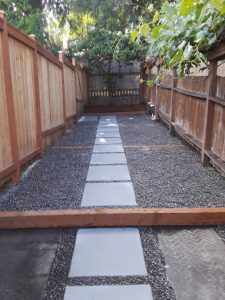Top Tips for Tree Transplanting in Seattle
Transplanting a tree as a Seattle homeowner or landscaper can be a challenging task, but with the right approach, you can successfully relocate a tree and ensure it thrives in its new home. In this guide, we’ll provide top tips for transplanting trees, walk you through the process, and discuss the benefits of hiring a professional contractor to help with the project.
Top Tips for Tree Transplanting
1. Choose the Right Tree
Select a tree that is suitable for transplanting and well-suited to thrive in its new location. Some trees, especially younger ones, are easier to transplant than others. Make sure the tree has a healthy root system and is not overly stressed before beginning the transplant.
2. Prepare the Tree
Before you transplant, prune both the roots and the canopy of the tree. This minimizes stress and promotes faster recovery. Reducing the tree’s canopy helps balance the loss of roots during transplanting, and pruning the roots encourages the development of new, healthy growth.
3. Dig Carefully
Excavate the tree’s root ball carefully. Use a sharp shovel or digging tool to ensure precision while digging, and avoid damaging the roots. The root ball should be large enough to support the tree’s overall health and minimize shock during the transplant.
4. Transport Safely
Once the tree is dug up, move it carefully to its new location. If the tree is large, you may need specialized equipment to lift and transport it safely. Avoid dragging the root ball, as it can cause damage to the roots or trunk.
5. Plant Properly
Replant the tree in well-draining soil, and ensure it is positioned at the correct depth. Use proper support, such as staking the tree, to keep it steady until its root system establishes itself. Mulch around the base of the tree to retain moisture and regulate temperature.
The Construction Process
1. Pre-Transplanting: Assess the Tree’s Health, Choose a New Location, and Obtain Permits
Before beginning, assess the health of the tree and its root system. Ensure that the new location provides the tree with the proper conditions for growth, including sunlight, soil type, and drainage. In Seattle, be sure to check for any necessary permits for transplanting trees, especially if the tree is large or in a protected area.
2. Tree Preparation: Prune Roots and Canopy, and Dig the Root Ball
Prune the tree’s roots and canopy to minimize transplant shock. Then, dig around the tree’s root ball, carefully ensuring the size is large enough to contain the main roots.
3. Excavation: Carefully Excavate the Tree
Use a sharp shovel or digging tool to carefully remove the tree from the ground. Take care not to damage the surrounding soil or the root ball.
4. Transportation: Move the Tree to Its New Location
Transport the tree to its new location, making sure to handle it carefully. For larger trees, professional equipment like cranes or tree spades may be necessary to move the tree safely.
5. Replanting: Plant the Tree in Its New Location
Plant the tree in the prepared hole, ensuring it’s at the right depth. Water the tree thoroughly and add mulch to retain moisture. If necessary, stake the tree to keep it steady.
Benefits of Hiring a Contractor
Expertise
Contractors have the knowledge and experience to ensure that your tree transplanting is done safely and effectively. They know how to handle trees properly, minimizing damage and ensuring the tree thrives in its new location.
Time-Saving
Hiring a contractor saves you time. While you focus on other tasks, the contractor can handle all aspects of the transplanting process, ensuring the work is completed efficiently.
Safety
Tree transplanting can involve heavy lifting, digging, and specialized equipment. Contractors prioritize safety and minimize the risk of injury or damage during the process.
Specialized Equipment
Contractors have access to equipment designed for transplanting large trees, ensuring the process is smooth and safe. They also know how to use this equipment effectively to avoid damaging the tree or the surrounding landscape.
Warranty and Liability
Reputable contractors offer warranties for their work, providing you with peace of mind. They also assume liability for any accidents or mistakes during the transplanting process.
Permitting and Inspections
A professional contractor will handle the permitting process and ensure that your tree transplant complies with local regulations in Seattle. This is especially important if you’re working with larger trees or in protected areas.
Cost-Effective
While hiring a contractor may seem like an additional expense, professionals often complete the job faster and more efficiently, saving you time and potentially preventing costly mistakes.
Why Hire a Contractor in Seattle?
Local Knowledge
Contractors familiar with Seattle’s unique climate and regulations can ensure that your tree transplanting is done with the local conditions in mind. They understand the city’s soil types, climate, and any local restrictions regarding tree removal and transplanting.
Network of Suppliers
Contractors have established relationships with local nurseries and suppliers, allowing them to source healthy trees and materials at competitive prices. They can also recommend the best species for your specific yard and climate.
Efficient Project Management
Hiring a contractor ensures the project stays on track and on budget. They have the experience to manage all aspects of the transplanting process, from initial planning to final planting.
Final Thoughts
Transplanting a tree can enhance the beauty of your Seattle property, but it requires careful planning and expertise. By following these tips for tree transplanting and considering the benefits of hiring a professional contractor, you can ensure a successful transplant that will thrive for years to come. Whether you’re relocating a tree for aesthetic purposes, improved growth, or property development, professionals can ensure the process is done efficiently, safely, and with care.



















